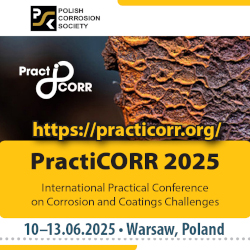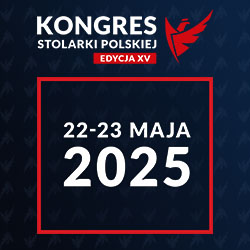Open Access (Artykuł w pliku PDF)
The impact of cooling rate on strains in freezing concrete
prof. dr hab. inż. Marcin Koniorczyk, Politechnika Łódzka, Wydział Budownictwa, Architektury i Inżynierii Środowiska
ORCID: 0000-0002-6887-4324
dr inż. Dalia Bednarska, Politechnika Łódzka, Wydział Budownictwa, Architektury i Inżynierii Środowiska
ORCID: 0000-0002-2146-0650
dr inż. Piotr Konca, Politechnika Łódzka, Wydział Budownictwa, Architektury i Inżynierii Środowiska
ORCID: 0000-0002-5415-5169
prof. dr hab. inż. Zbigniew Giergiczny, Politechnika Śląska, Wydział Budownictwa
ORCID: 0000-0003-2994-2010
Adres do korespondencji: Ten adres pocztowy jest chroniony przed spamowaniem. Aby go zobaczyć, konieczne jest włączenie w przeglądarce obsługi JavaScript.
DOI: 10.15199/33.2023.03.02
Oryginalny artykuł naukowy
Streszczenie. W artykule zaprezentowano analizę wpływu szybkości chłodzenia na odkształcenia zamarzającego betonu. Badania eksperymentalne dotyczyły pomiaru odkształceń materiału poddanego cyklom chłodzenia-ogrzewania realizowanym z rożną szybkością. Analizę uzupełniono o badania porozymetryczne i kalorymetryczne. Otrzymane wyniki jednoznacznie potwierdzają teorię Powersa mówiącą, iż odkształcenia betonu zwiększają się wraz ze wzrostem szybkości chłodzenia. Maksymalne odkształcenia obserwowane w betonie napowietrzonym były znacznie mniejsze niż w betonie referencyjnym, co potwierdza zasadność stosowania domieszek napowietrzających w składzie betonu narażonego na agresję spowodowaną zamrażaniem/rozmrażaniem.
Słowa kluczowe: trwałość kompozytów cementowych; mrozoodporność betonu; korozja mrozowa; domieszka napowietrzająca.
Abstract. The main purpose of the manuscript was to analyze the influence of cooling rate on deformation of concrete while freezing. Experimental studies concerned the measurement of strains generated during cooling-heating cycles carried out at different rates. The analysis was supplemented with porosimetric and calorimetric tests. The obtained results unambiguously confirm the Powers theory that concrete deformations rise with the increase of the cooling rate. The maximum strains observed in the air-entrained concrete were much lower compared to the reference material, which confirms the validity of the use of admixtures increasing the frost resistance of the material.
Keywords: durability of cement composites; frost-resistance of concrete; frost corrosion; air-entraining admixture.
Literatura
[1] Powers TC. Aworking hypothesis for further studies of frost resistance of concrete, in Journal Proceedings. 1945; 41 (1): 245 – 272.
[2] Neville A. Concrete properties. Krakow: Polish Cement Association, 2000.
[3] Fagerlund G. Determination of pore-size distribution from freezing-point depression. Materiaux etConstruction. 1973;DOI: 10.1007/BF02479036.
[4] Powers TC, Helmuth R. Theory of volume changes in hardened portland-cement paste during freezing, in Highway Research Board Proceedings. 1953; 32.
[5] Powers TC, Willis T. The air requirement of frost resistant concrete, in Highway Research Board Proceedings. 1950; 29.
[6] Wzorcowe Warunki Wykonania i Odbioru Robot Budowlanych, Generalna Dyrekcja Dróg Krajowych i Autostrad, https://www.gov.pl/web/gddkia/ wymagania-ogólne, dostęp: 8.01.2023.
[7] PN-EN 206-1:2003 Beton – Część 1:Wymagania, właściwości, produkcja i zgodność.
[8] Bednarska D. Freezing kinetics of water confined in porous building materials. Rozprawa doktorska, Politechnika Łódzka, 2020.
[9] Coussy O, Monteiro PJ. Poroelastic model for concrete exposed to freezing temperatures. Cement and Concrete Research. 2008; 38 (1): 40 – 48.
[10] Chatterji S. Freezing of air-entrained cement-based materials and specific actions of air-entraining agents. Cement and Concrete Composites. 2003; 25 (7): 759 – 765.
[11] Cui L, Cahyadi JH. Permeability and pore structure of OPC paste. Cement and Concrete Research. 2002; 31 (2): 277 – 282.
[12] Mindess S, Young F, Darwin D. Concrete 2nd Editio. Technical Documents, 2003.
[13] PN-EN 12350-2 Badania mieszanki betonowej – Część 2: Badanie konsystencji metodą opadu stożka, 2011.
[14] PN-EN 12350-7 Badania mieszanki betonowej – Część 7: Badanie zawartości powietrza – metody ciśnieniowe. 2011.
[15] Scrivener K, Snellings R, Lothenbach B. A practical guide to microstructural analysis of cementitious materials. Crc Press Boca Raton. 2016.
[16] Zhang J, Scherer GW. Comparison of methods for arresting hydration of cement. Cement and Concrete Research. 2011, DOI: https://doi.org/10.1016/j.cemconres.2011.06.003.
[17] Washburn EW. The dynamics of capillary flow. Physical review. 1921; 17 (3): 273.
[18] Muller A, Scrivener K. A reassessment of mercury intrusion porosimetry by comparison with 1H NMR relaxometry. Cement and Concrete Research. 2017; 100: 350 – 360.
[19] Vyazovkin S, Sbirrazzuoli N. Isoconversional kinetic analysis of thermally stimulated processes in polymers. Macromolecular Rapid Communications. 2006; 27 (18): 1515 – 1532.
[20] Powers TC, Brownyard TL. Studies of the Physical Properties of Hardened Portland Cement Paste. Journal of American Concete Institute. 1947; 43.
[21] Bednarska D, Koniorczyk M. Freezing of partly saturated cementitious materials – insight into properties of pore confined solution and microstructure, submited to Construction and Building Materials.
[22] Koniorczyk M, Bednarska D, Wieczorek A, Maniukiewicz W. The single freezing episode of early-age cementitious composites: Threshold properties of cement matrix ensuring the frost resistance. Construction and Building Materials. 2021; 277: 122319.
[23] Murray B, et al. Kinetics of the homogeneous freezing of water. Physical Chemistry Chemical Physics. 2010; 12 (35): 10380 – 10387.
[24] Koop T, Murray BJ. Aphysically constrained classical description of the homogeneous nucleation of ice in water. The Journal of Chemical Physics. 2016; 145 (21): 211915.
[25] Vollpracht A, Lothenbach B, Snellings R, Haufe J. The pore solution of blended cements: a review. Materials and Structures. 2016; 49 (8): 3341 – 3367.
Przyjęto do druku: 15.02.2023 r.
Materiały Budowlane 03/2023, strona 5-10 (spis treści >>)
































